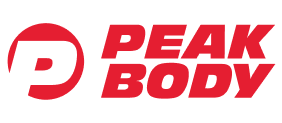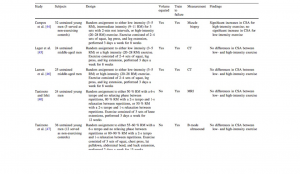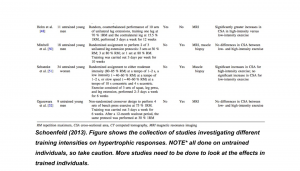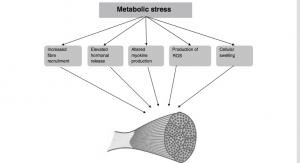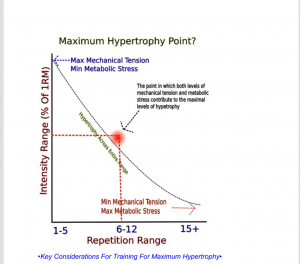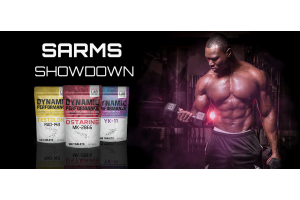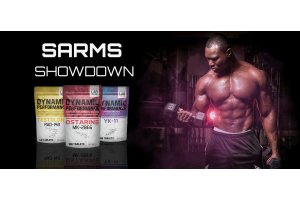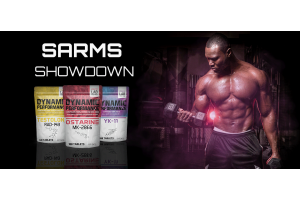Managing Your Training Volume And Intensity For Muscular Hypertrophy
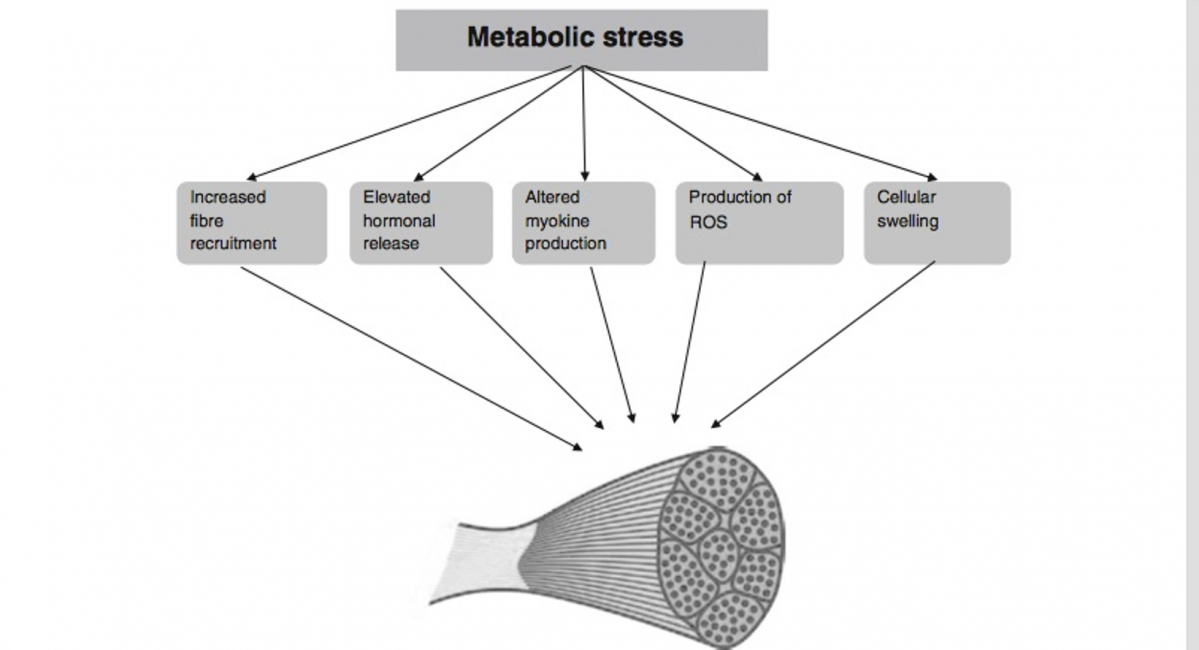
When it comes to developing size and strength, volume and intensity are going to be the two key training ingredients you will need. It’s set in stone, you just can’t avoid them. The truth is, if you don’t manage your volume and intensity throughout your training journey, it’s going to become near impossible to build the size and strength you want. Now, it’s been firmly established that if you want maximal strength, then high-intensity training is the way to go. Simply put, as you throw more weight on the bar over time, the mechanical tension developed (basically the tension on a muscle as it is stretched), leads to increased muscular strength gains. Ok, that is the pretty easy part!
Muscular hypertrophy however is a little bit trickier to figure out! It’s still pretty unclear what the precise training mechanisms are which lead to increases in muscle size. Although it’s very likely that optimal hypertrophy will occur at training volumes which allow for significant levels of both mechanical tension and metabolic stress (think the ‘burn’, ‘pump’, building up of metabolic products and, reduced muscle oxygen supplies). Ultimately, it is thought that the interactions between these two, provides the stimulus for muscle size gains. It’s true that training volume is key for muscular size development, but what exactly the optimal amount of volume is for this to occur, is still very much unclear.
The Problem With Either Volume Or Intensity For Induced Muscular Hypertrophy
If optimal muscular hypertrophy is the product of both increased mechanical tension and metabolic stress development, then your training is going to need to balance both intensity and volume in order to make that successfully happen. Simply put, training high-volume or high-intensity is not sufficient for optimal hypertrophy development over time. You honestly need to be incorporating both. Falling into the trap of just basing your training programming around one or the other, will eventually hold you back. Trust me on that.
•The Problem With High-Intensity Training Only•
⇒While more weight on the bar will maximally increase mechanical tension and thus muscular strength development, the volume utilised (in terms of sets and reps) has to be decreased to accommodate this. This lower volume in turn reduces the potential for increased metabolic stress. Essentially, you get the mechanical tension, without the metabolic stress. You are missing a key ingredient of hypertrophy!
•The Problem With High-volume Training Only•
⇒While lower weights on the bar (a lower training intensity) yet more sets and reps will allow for increased metabolic stress, the lower working training intensities reduces the potential for mechanical tension development. Essentially, you get the metabolic stress, without the mechanical tension. You are missing a key ingredient of hypertrophy!
So, you are left in a pretty tricky position when it comes to training for maximum muscle size development! High-volume or high-intensity resistance training alone makes it difficult to address both the higher levels of mechanical tension and metabolic stresses that are needed in order to stimulate maximum muscular hypertrophy. It’s therefore a question of really trying to find optimal ways of being able to plan your training sessions so that you can achieve the levels of volume and training intensities needed to stimulate the awesome muscle size gains that you want.
What Can You Do To Tailor Your Training Towards Maximum Muscular Hypertrophy?
Well, at the moment I can tell you this: all sorts of training volumes and intensities can lead to muscular size increases. There is no one magical volume (set/rep) or intensity range that is going to give you the muscular size development that you want. If it was that simple, then all the research would be done! But, it’s still going on, and lots of it. At this point in time, no one really knows how you can plan your training sessions (in terms of both volume and intensity) to allow for optimal levels of mechanical and metabolic stress development. The good news for you is, there are a few ideas floating around over how you might optimise both your training volume and intensity to address both higher levels of mechanical tension and metabolic stress needed for hypertrophy.
•The ‘hypertrophy rep range’•
⇒The theory for this is simple: you want to work in a rep range which manages to provide an optimal combination of both mechanical tension and metabolic stress in order to maximise the hypertrophic response. Given that both low (1-5) and moderate (6-12) rep ranges have been shown to produce superior gains in muscle size over high rep ranges (15+), a rep range of around 6-12 is likely to allow for an optimal combination between mechanical tension and metabolic stress. Thus, enhancing your muscular response to training.
•The ‘varied rep range’•
⇒The theory behind this is that as you become more advanced, you will need more overload to induce muscle growth. This means higher levels of mechanical tension and metabolic stress. A nice way to do this is to vary your repetition ranges. Working at low rep ranges (1-5) would allow for optimal improvements in maximal strength development. This boost in strength would allow you to lift heavier loads in a moderate intensity range (say at 6-12 reps) allowing for higher levels of mechanical tension and metabolic stress needed for increases in muscle size.
•Training Set Approach•
⇒What I mean by this is simply how you perform each exercise in terms of exercise ‘sets’. The theory here is that certain ways of performing your exercise sets should allow for higher intensities without comprising volume during your training session. This would enable a favourable environment during your training in which optimal levels of mechanical tension and metabolic stress could be achieved in order to maximise muscle growth. Unlike traditional training (TD) whereby you simply perform for instance, 3 sets of an exercise at around 8-12 repetitions with a constant weigh on the bar, pyramid training (PD) offers a different approach. With PD, you perform for instance 3 sets of an exercise and each set you perform fewer repetitions (e.g. set 1 at 12 reps, set 2 at 10 reps, set 3 at 8 reps) and each set increasing the intensity.
⇒Technically, a PD system would allow for maintenance of higher training volumes (8-12 repetition ranges), while working towards higher intensities at the top end of your training sets. Again, this would allow for a nice combination between mechanical tension and metabolic stress development. However, this area does need more research!
So, if you are interested in all of the science behind this, then keep reading further!
The Science: Intensity Ranges And Muscular Hypertrophy
So there have been quite a few studies conducted (see study table below) to investigate the influence of different training intensities (% of 1RM) on muscular size development and if I am honest, the research findings are varied! Some studies have showed that higher training intensities elicit greater hypertrophic responses than lower training intensities, while others have shown that similar extents of hypertrophy can be achieved with either lower or higher intensities. While these findings are varied, it’s clear that a range of intensities can induce a hypertrophic response. It just not clear-cut where this threshold point exactly lies. In other words, what is the minimum training intensity needed to initiate the hypertrophic response? Given that mechanical tension plays an important role in the hypertrophy response it’s likely that a minimum level of training intensity will need to be reached in order to generate levels of mechanical tension that maximises the hypertrophic response (Schoenfeld 2013).
Schoenfeld (2013). Figure shows the collection of studies investigating different training intensities on hypertrophic responses. NOTE* all done on untrained individuals, so take caution. More studies need to be done to look at the effects in trained individuals.
If there is such a threshold level, it’s likely to be around ~ 60-65% of 1RM (Schoenfeld 2013). The reason for this threshold level is due to the fact that at an intensity of ~ 60% of 1RM, the complete fibre-type spectrum is activated [particularly the largest motor units (Schoenfeld, 2013)]. Why is this important? Well essentially, the activation of these motor units is likely to initiate a chain of events that lead to the up-regulation in anabolic (muscle building) signals, setting the hypertrophy process in motion (Schoenfeld, 2013).
•In Short•
⇒Achieving a minimum level of training intensity (~ 60-65% of 1RM) will lead to the development of a level of mechanical tension which results in the full recruitment of motor units. This full recruitment leads to the maximum up-regulation of anabolic signalling pathways which in turn, set maximum hypertrophy in motion.
It’s also important to realise that muscular hypertrophy does occur at training intensities lower than ~ 60% of 1RM. But the problem is, the hypertrophic responses are not maximally produced (Agustsson and Themee, 2007). A likely explanation for this is that training under intensities of ~ 60-65% of 1RM results in a sub-optimal degree of mechanical tension. This is highly plausible given that studies have shown sub-maximal recruitment of motor units at lower training intensities (Schoenfeld, 2013). As a result of this sub-maximal recruitment, it’s likely that the associated anabolic signalling pathways are not fully up-regulated. Although the metabolic stress is likely going to be high, the mechanical tension is just not going to be large enough to maximise muscle hypertrophy.
Although important to note that mechanical tension is unlikely to be solely responsible for all the hypertrophic responses associated with exercise (Schoenfeld, 2010). This is because some studies have actually demonstrated that resistance training routines employing high degrees of mechanical tension, mostly led to neural adaptations without resulting hypertrophy (Schoenfeld, 2010).
•The bottom line•
⇒Even though a wide spectrum of training intensities can induce muscular hypertrophy, it’s likely that a certain intensity threshold must be reached (~60%) in order to maximise the hypertrophic response. The reason for this is most likely due to the fact that a certain level of mechanical tension must be generated in order to maximally recruit all available motor units and thus generate the greatest downstream anabolic signalling response.
The Science: Metabolic Stress And Muscular Hypertrophy
Ok, so it’s well established that a level of mechanical tension is needed in order to maximise the hypertrophic responses to resistance training. But what about metabolic stress? Well, it has been suggested that metabolic stress might play an additive role by enhancing the post exercise hypertrophic response (Schoenfeld, 2013). As highlighted by Schoenfeld (2010), the effects of metabolic stress are likely to arise through metabolite build up as a result of what is called anaerobic glycolysis. Anaerobic glycolysis is simply the production of energy using glucose in the absence of oxygen. It is likely that the products of anaerobic glycolysis (e.g. lactate, hydrogen ions, creatine) initiates a series of processes (fibre recruitment, enhanced hormone release, cellular swelling, production of ROS, altered myokine production), which contribute to the hypertrophy process (Schoenfeld, 2013).
Interestingly, bodybuilding-type resistance training programs are likely to induce significant amounts of metabolic stress. This is because these programs rely heavily on the anaerobic glycolytic ATP production system (Tamaki et al, 1994). Programs utilising multiple load sets of 6-12 repetitions show significant increases in intramuscular lactate, blood lactate as well as glucose (all signs of increases anaerobic activity) all of which have significant impacts on many anabolic processes (Kraemer and Ratamess, 2005). As Schoenfeld (2010) suggests, this is likely to increase the potential for cellular interactions which are implicated in muscle tissue remodelling. However, it’s still important to realise that low-rep work can still produce significant gains in muscle size and similar to that induced through moderate repetition work (Campos et al, 2002). Which one is actually better for hypertrophy is still up for debate (Schoenfeld, 2010).
There have been a few other things that have found their way into the literature. I am sure most of you have heard and experienced the ‘pump’ effect after your training? Well, there is some suggestions that the pump effect might play a role in mediating hypertrophy. In short, the pump is caused through blood plasma becoming trapped in the working muscle during moderate repetition work. This results in all sorts of changes in pressure gradients and with the combined effects of metabolic product built up (through anaerobic glycolysis), acts to draw more water into the muscle cells. Although it’s not exactly clear how this cell swelling impacts hypertrophy, the fact that hydration is important in cell regulation suggests that a potential mechanism might exist (Schoenfeld, 2010).
Schoenfeld (2013). Figure shows how metabolic stress could lead to muscular hypertrophy through a range of downstream mechanisms.
•The Bottom Line•
⇒Metabolic stress seems to be greater in training programs utilising moderate loads at moderate repetition ranges. Given that metabolic stress can activate a range of processes implicated in muscle tissue growth, it’s likely that moderate rep range programs can play a significant role in muscular hypertrophy. Although more work still needs to be done to investigate the precise mechanisms by which metabolic stress influences muscle hypertrophy.
Mechanical Tension And Metabolic Stress For Muscular Hypertrophy
Ok, so looking at all this research it’s very likely that muscular hypertrophy is driven by both mechanical tension as well as metabolic stress development. With the primary driver being a threshold level of mechanical tension. This is likely to be achieved at training intensities of around ~ 60-65% of 1RM. Therefore anyone looking for an emphasis on increased muscular hypertrophy, should aim to train above this. Although muscular hypertrophy can occur with training intensities below 60-65% of 1RM, the responses are far from maximal. Despite the potential for high levels of metabolic stress at lower intensities, the lack of sufficiently high levels of mechanical tension (and hence motor unit recruitment) are likely to severely inhibit the maximal achievable levels of hypertrophy.
Given this, it is reasonable to assume that in fact, metabolic stress serves as an enhancing-role in muscular hypertrophy (but only when a level of mechanical tension is reached). Since metabolic stress seems to be greater in the higher-volume, moderate rep-range training routines (e.g. 6-12 reps) over lower-rep ones (while still maintaining a level of mechanical tension), it would seem that maximum muscle size responses occur when training in more moderate intensity and rep ranges. Even though it is possible to increase muscular size with lower-rep, higher intensity load training, the reduced metabolic stresses (even in the presence of maximal levels of mechanical tension) would reduce your ability to achieve maximal muscle hypertrophy.
•Key Considerations For Training For Maximum Hypertrophy•
⇒Train with a wide variety of rep ranges, alternate between low (1-5) and moderate (6-12) repetition ranges. Don’t fall into the trap or either just training high-intensity or high-volume. Hypertrophy can occur as a result of either both low or moderate repetition ranges, but it won’t be maximum hypertrophy!
⇒Add in some high-load, 1-5 repetition range training sessions to increase maximal strength development. This will allow you to lift heavier in the more moderate load, moderate repetition ranges over time, ensuring you continue to produce the optimal levels of mechanical tension and metabolic stresses in this range needed for maximal hypertrophy.
Article written by Stephen Moreton


